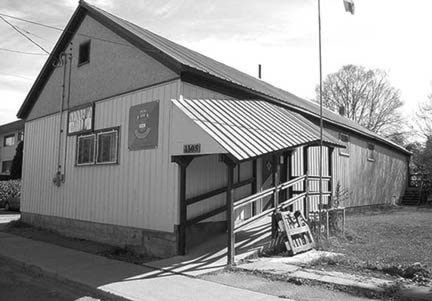Jim Cameron
It is not a building that draws attention, it never really has. It was not a particularly fancy building when it was built — although it did have its charm — and it is a less fancy building now. It is, in truth, strictly utilitarian and, while it has certainly fulfilled the vision of those who created it and will likely do so for many years to come, it is probable that its one-hundredth birthday will go as unnoticed as many of its fancier neighbours. It is the Anglican Christ Church Parish Hall and it has played a humble host to thousands of Cranbrook citizens as they gathered together to celebrate life, death, wins, losses, love, hope and all things in between. It is one of the oldest in Cranbrook and one of the last of its breed: a community hall.
As one of the few buildings of any note to be constructed in the city during the First World War, the fact that it was built at all is a testimony to the members of the Anglican congregation: money was tight, materials rationed or restricted and labour difficult to find, but, in early November, 1915, local contractor Robert Dixon took on the job and had the place up and ready before Christmas. There were, of course, other halls in town at the time: the Masonic Temple (now the Studio), Fraternity Hall (later the Knights of Pythias Hall), Carmen's Hall, Mighton's Hall and the Royal Black Knights of Ireland Hall, the latter two of which were found over tobacco shops on Baker Street. They were all adequate for their purpose but construction of the Parish Hall created a space larger than most, with a kitchen and a stage all readily available to the general public.
It was a fine hall for the day, constructed behind the former Anglican Rectory on the southeast corner of 13th Avenue and 2nd Street, running parallel to the alley across two and a half lots. The hall itself, measuring 50 x 30 feet, was created not only for church functions, but for concerts, plays, socials, gymnastics, meetings and any other such uses as conceived by renters. The front portion consisted of an entrance foyer, 7 x 12 feet, and a kitchen, 7 x 18 feet. The kitchen contained a stove, hot and cold water, a sink, a cupboard and shelves. At the opposite end of the hall was a 14 x 30 foot stage behind which were two dressing rooms, 7 x 10 feet, each connected to a complete lavatory (it had a toilet). Under a separate roof by the kitchen was the ladies' parlour, 22 x 25 feet, which was heated by a stove and created for the use of the Anglican Church Ladies Guild and other groups wishing to meet in smaller quarters.
The hall was well ventilated and heated by an up-to-date hot air furnace. The windows were small and almost square with single-pane, flaked flint glass allowing a subdued light year-round. Aside from the main entrance, a door leading into the parlour and thence into the street, a door on the stage leading to the rectory lawn and a side door half way up the hall leading into the lane all supplied egress in the event of a fire.
The flooring was of maple and the walls were wainscoted in a stained moss-green wood to a height of about four feet six inches, with sand-finished plastered walls above. The entire building was lit by electric lights with special attention paid to the stage area. The structure itself was shingled and rested on a concrete platform, all at a cost of $3,000.00, a tidy sum for the day.
The Parish Hall officially opened to a large crowd on the afternoon of December 16, 1915, with just the right touch of pomp and circumstance. To quote from a Cranbrook Herald account of the day, "The Rector opened with a prayer [expressing] the gratitude of the Church at large for the splendid work done by every section of the congregation and for the help rendered by friends in other denominations...Mr. C. A. Cock followed the Rector and gave a sketch of the history of the English Church in Cranbrook, expressing his gratification at the erection of the new building. The Venerable Archdeacon Beer spoke of the rapid growth of English Church...and of its good fortune" and ended by cautioning the parish to "cut your cloth according to your pocket and don't set out to complete against other churches." The names of those who contributed to the construction of the hall include many still known in the community: Green, Roberts, Ward, Parker, Webb and many others. There followed a community bazaar, some theatrical vignettes and a dance that went into the early hours of the morning. The hall has remained in constant use ever since.
In November, 2003, the 1813 Lord Strathcona Army Cadet Corps took possession of the building for their own use. The former Parish Hall is now known as Kennedy Hall, named for four members of the Kennedy family whose combined military service covers over a century.
If the original hall had a modicum of charm it must be said that the present day building falls somewhat short of that particular mark. Numerous cosmetic changes over the years have left us with little but memories of the original structure.
Still, it is not only the large and visually impressive that forms the history of a town and its people, but, perhaps even more so, those things on a much less grand scale, those small, plain places that are there for all to use, for all to enjoy. Such places as the Anglican Parish Hall, built in 1915, and used continuously by generations of Cranbrook citizens, truly form the heart of a city.
